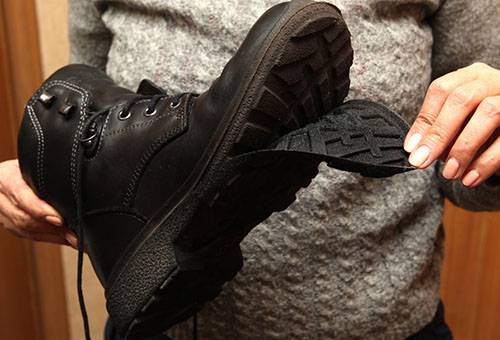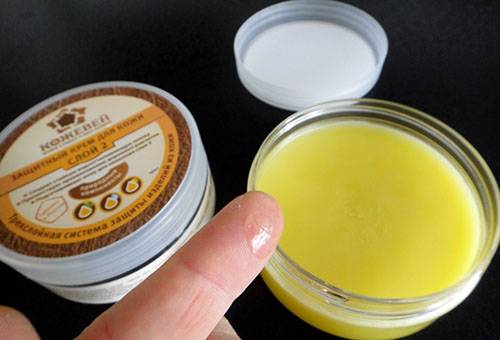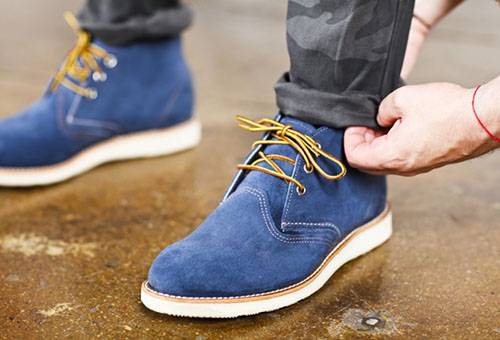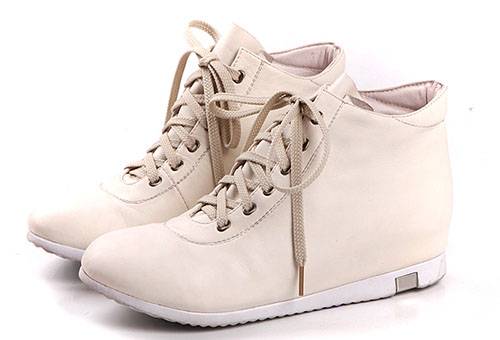What is the best way to treat shoes to prevent them from getting wet?
With the onset of wet weather, it is especially important to feel comfortable in autumn shoes: you get a little wet, cold, and a cold will immediately make itself felt. But even in the summer, squelching in shoes is no good, because even those who like to walk barefoot in the rain are unlikely to like having wet feet on a constant basis. What can you do to your shoes to protect them from moisture? It all depends on the type of material and the reason for getting wet.

If it's all about the sole
In search of protection from moisture, we first of all turn our attention to leather or suede care products, without skimping on impregnations and wax creams. But what if the problem is not so much in the upper part of the shoes, but in the sole? But it is precisely this material that comes into direct contact with wet asphalt or damp soil, and it is its damage or poor quality that is the cause of your wet feet.
Agree, you rarely step into such deep puddles that your shoe goes under the water up to your ankle, but if you still have such a sin, then it’s better to get a pair of rubber boots right now. The fact is that if you step into a shallow puddle, you will very quickly feel moisture on your feet, but neither leather nor good quality suede can let water through so quickly. Most often, moisture gets inside not through the main material, but through poor-quality seams, poorly glued soles, or holes and cracks at the bottom of your shoes.
- Poor-quality seams can be coated and impregnated with any water-repellent cream or spray, and folk remedies include animal fat, wax, paraffin or castor oil. True, this method will not help get rid of the problem once and for all, and you will have to periodically update the protective layer.
- Poorly glued soles are more common on cheap leatherette shoes, but regardless of the base material, there is only one solution: tear off the sole and glue it, or better yet, re-stitch it. Of course, not everyone has the skills of a shoemaker, and most likely you will have to take your shoes to the workshop, so think about whether this pair of shoes is worth the money and time spent on it.
- Cracks or holes in shoes can be sealed. Although, in order to get ahead of the problem, it is better to do this with new shoes. To do this, you need to lightly sand the sole to strengthen the adhesion of the material to the surface, apply drying oil and let it dry completely. A more radical way to deal with leaking soles would be to install soles on top of the original sole.
Advice
Shoes from trusted brands are distinguished by high quality seams and soles, which means that the risk of coming home with wet socks in such shoes will be much less. In addition, well-known brands do not skimp on the initial impregnation of leather or nubuck, which is also an undeniable advantage.
Leather and suede care
Although caring for water-repellent leather and nubuck has more aesthetic weight than practical weight, poor quality leather can actually leak moisture quite quickly, unlike thick leather made to specifications.And it’s unlikely that you want leather or suede to absorb slush, becoming covered with a disgusting coating of dirt, even if your feet are completely dry. We tell you what you need to do to make your shoes look chic even in the fall and not wear out.
- Leather
The shoe care market is full of water-repellent compounds for any material, so they will be the easiest to use. For leather, you can use impregnation in the form of a spray, but a more classic option is special waxes and creams. Just keep in mind that emulsion cream will not protect against moisture: you need to choose a more expensive organic product with a high content of fat, wax and oils.
For leather, unlike suede, there are many folk remedies that can protect shoes from getting wet. The simplest thing is to treat the skin and seams with castor oil instead of cream, but you can also make mixtures: ½ tbsp. l. turpentine plus 4 tsp. flaxseed oil and fish oil; 1 tsp. paraffin or wax plus 1 tsp. flaxseed oil or a 1:1 mixture of castor oil and animal fat.
Advice
In folk recipes, flaxseed oil can be replaced or supplemented with rendered animal fat. Waterfowl fat is considered best.
- Suede and nubuck
Neither wax nor cream is suitable for suede, and the only way to protect it from moisture is to use special impregnations in the form of a spray, which are made on the basis of water-repellent emulsions.
Regardless of what treatment you choose and what material you are dealing with, impregnation can only be done on clean and dry shoes at least 6 hours before going outside. The procedure must be repeated regularly as necessary, since the effect of wax and sprays is not endless.
Advice
In order to properly impregnate new boots with a protective substance, you can resort to multiple initial treatment of the shoes. To do this, shoes need to be lubricated or treated with a suitable product 3 times at intervals a day before you start wearing them. You need to spray the spray or apply oil or cream until the shoes stop actively absorbing them.
Caring for shoes made from other materials
If you are dealing with wet non-leather shoes, then no store-bought care will do. The thing is that using oil or sprays on leatherette is pointless, since it does not absorb water or fat, and on fabric it is simply stupid. It turns out that nothing can protect you from getting your fabric sneakers wet, but leatherette shoes can still be saved.
We mentioned that leatherette itself does not absorb moisture, which means that the problem most likely lies in a poorly glued, poorly sewn or damaged sole, which brings us back to the very first point of discussion. You already know what you need to do: take care of the soles, and you can wear the boots for a long time without the risk of getting your feet wet.
Having these simple means and methods for caring for your boots in your arsenal, you will no longer catch a cold due to an oversight by the shoe manufacturer or bad weather.


